Introduction to spa towel warmers
Spa towel warmers have become an indispensable component in enhancing the guest experience at spas and wellness centers worldwide. Understanding how these devices function sheds light on their efficiency and benefits.
In essence, a spa towel warmer operates on the principle of heating towels to a comfortable and soothing temperature, providing patrons with a luxurious experience. These warmers come in various types, each employing different mechanisms to achieve the desired result.

Mechanism behind spa towel warmer
There are primarily three types of spa towel warmers: electric, hydronic, and UV. Electric towel warmers utilize a built-in electric element to heat the towels efficiently. They are easy to install and operate, making them a popular choice in many spa settings.
Hydronic towel warmers, on the other hand, are connected to a hydronic heating system, relying on hot water circulation to warm the towels. They are known for their energy efficiency and can be integrated into the spa’s existing heating system.
UV towel warmers use ultraviolet light to kill bacteria and germs while gently heating the towels. This method ensures both warmth and cleanliness, making it a hygienic choice in spa environments.

Benefits of using a spa towel warmer
The advantages of employing a spa towel warmer extend beyond the luxury of warm towels. They contribute significantly to maintaining a hygienic environment, offering patrons a sense of comfort and relaxation.
Apart from enhancing the guest experience, these warmers also streamline spa operations by ensuring a steady supply of warm towels throughout the day, contributing to the overall efficiency of the facility.

Factors to consider when choosing a spa towel warmer
When selecting a towel warmer for a spa, several factors should be considered, including size, energy efficiency, and installation requirements. The size and capacity of the warmer should align with the spa’s needs, ensuring a sufficient supply of warm towels for guests.
Additionally, opting for energy-efficient models can significantly reduce operational costs in the long run, while assessing installation requirements ensures a seamless integration into the spa’s layout. When selecting a spa towel warmer, consider factors like size and capacity to ensure it meets the spa’s towel needs. Energy efficiency plays a vital role in long-term operational costs. Installation requirements should align with the spa’s infrastructure for seamless integration. Assess the heating method—whether electric, hydronic, or UV—to match specific preferences and functionalities. Opt for a model that accommodates various towel sizes to cater to diverse guest needs. Warranty and after-sales support are crucial for ongoing maintenance and assistance.

Maintenance and care tips for spa towel warmer
Proper maintenance is crucial for maximizing the lifespan of spa towel warmers. Regular cleaning and adherence to maintenance guidelines provided by the manufacturer are essential to prevent malfunctions and ensure optimal performance. Moreover, familiarizing oneself with troubleshooting procedures for common issues can help address problems promptly, minimizing downtime and ensuring a seamless guest experience.

Innovations and future trends in spa towel warmer
The future of spa towel warmers is marked by technological advancements geared towards sustainability and eco-friendliness. Manufacturers are exploring innovative designs that not only enhance functionality but also prioritize energy efficiency and environmental impact.

Conclusion
Spa towel warmers stand as an integral component in elevating the spa experience for patrons. Understanding their mechanisms, benefits, and factors to consider assists spa owners and operators in making informed decisions to provide an enhanced and relaxing environment for their guests.



[…] Spa towel warmer […]
[…] Spa towel warmer […]
wonderfull
[…] Spa towel warmer […]
[…] Spa towel warmer […]
[…] Spa towel warmer […]
[…] Spa towel warmer […]
[…] Spa towel warmer […]
wonderfull
[…] Spa towel warmer […]
[…] Spa towel warmer […]
[…] Spa towel warmer […]
[…] Spa towel warmer […]
[…] Spa towel warmer […]
[…] Spa towel warmer […]
[…] Spa towel warmer […]
[…] Spa towel warmer […]
[…] Spa towel warmer […]
[…] Spa towel warmer […]